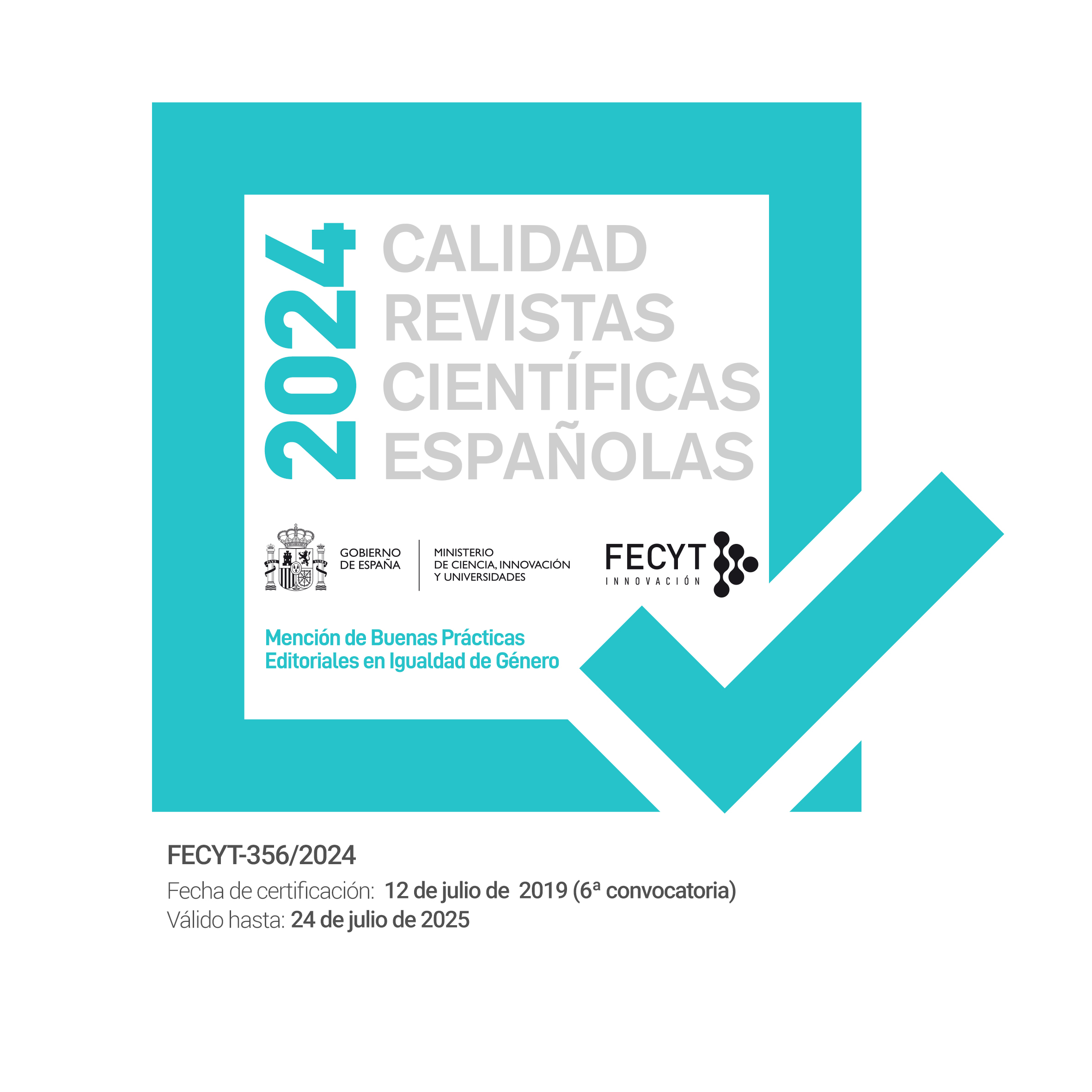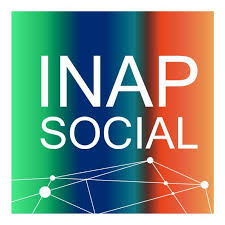Reformas institucionales en Canadá: ¿hacia una gobernanza urbana de geometría variable?
DOI:
https://doi.org/10.24965/gapp.vi24.318Downloads
References
ANDREW, Caroline y SMITH, Patrick J. (1999). «World-Class Cities: Can or Should Canada Play?», en ANDREW, Caroline; ARMSTRONG, Pat y LAPIERRE, André, Les villes mondiales. Y a-t-il une place pour le Canada? Ottawa: Pressesde l’Université d’Ottawa, pp. 5-25.
ANDREW, Caroline (1995). «Provincial-Municipal Relations or Hyper-Fractionalized Quasi-Subordination Revisited», en LIGHTBODY, James (dir.), Canadian Metropolitics. Governing our Cities. Toronto: Copp Clark, pp. 137-160.
BOISVERT, Michel y Hamel, Pierre (1998) «CUM: 1970-2000, des enjeux nouveaux et des jeux renouvelés», en BÉLANGER, Yves et al., La CUM et la région métropolitaine. L’avenir d’une communauté. Montréal: Pressesde l’Université du Québec, pp. 76-82.
BORRAZ, Oliver y LE GALÈS, Patric (2001). «Gouvernement et gouvernance des villes», en J-P. LERESCHE (dir.), Gouvernance urbaine et action publique en Suisse. París: Pédone, pp. 343-367.
BOUDREAU, julie-Anne (2000). The MegaCity Sage. Democracy and Citizenship in this Global Age. Montreal: Balck Rose Books, 198 p.
BOURNE, Larry (2000). «Urban Canada in Transition to the Twenty-First Century: Trends, Issues, and Visions», en BUNTING, Trudi y FILION, Pierre (dir.), Canadian Cities in Transition. The Twenty-first Century. Second edition. New York: Oxford University Press, pp. 26-51.
BOURNE, Larry S. (1999). «Designing A Metropolitan Region: The Lessons and Lost Opportunities of the Toronto Experience». Background Paper Prepared for Core Course on Urban and City management: Challenges for the Next Century. EDI, World Bank. Toronto: Mayo 1999.
BUNTING, Trudi y FILION, Pierre (dir.) (2000). Canadian Cities in Transition. The Twenty-first Century. Segunda Edición. Nueva York: Oxford University Press, 576 p.
BRUNEAULT, Frédérick y COLLIN, Jean-Pierre (2001) «Le partage des compétences». Sitio Internet: Villes, région, monde. Documento publicado en el marco del proyecto Démocratie municipale à Montréal: Des clefs pour analyser les enjeux de la réforme. Sitio Internet Villes, régions, mondes: http://www.vrm.ca/gestion_democratie.html.
COLLIN, Jean-Pierre, (1999). «Quel modèle de gestion métropolitaine pour les villes- régions canadiennes ?», en ANDREW, Caroline; ARMSTRONG, Pat y LAPIERRE, André, Les villes mondiales. Y a-t-il une place pour le Canada?, Ottawa: Pressesde l’Université d’Ottawa, pp. 403-420.
DOLFUS, Olivier (2001). La mondialisation. Paris: Presses de la fondation nationale des sciences politiques.
HALL, Peter A. y TAYLOR, Rosemary C.R. (1997). «La science politique et les trois néo- institutionnalismes», Revue française desciencepolitique, vol. 47, nº 3-4, pp. 469-496.
HAMEL, Pierre (2001). «Enjeux métropolitains: les nouveaux défis», en International Journal of Canadian Studies, vol. 24.
HAMEL, Pierre (1999). «Urban Politics in the 1990s: The Difficult Renewal of Local Democracy», en International Political Science Review, vol. 12, nº 2, pp. 173-186.
HAMEL, Pierre (1998) «Urban Politics in the 1990s: The Difficult Renewal of Local Democracy», International Political Science Review, vol. 19, nº 2, pp. 173-186.
HAMEL, Pierre, (1997). «Démocratie locale et gouvernementalité. Portée et limites des innovations institutionnelles en matière de débat public», en M. GARIÉPY y M. MARIÉ, Ces réseaux qui nousgouvernent?, París: L’Harmattan, pp. 406-423.
ISIN, Engin, F. (dir.) (2000). Democracy, Citizenship and The Global City. London (Ontario): Routledge, 319 p.
JOUVE, Bernard, (2001). La gouvernance urbaine dans tous ses états. Informe de investigación realizado por encargo de la Delegación de Ordenación del Territorio y de la Acción Regional, Ministerio del Equipamiento, los Transportes y la Vivienda, 105 p.
GIRLING, Zoe (1999). «Who Says Toronto Is a Good City?», en Andrew, Caroline, ARMSTRONG, Pat y LAPIERRE, André (dir.), Les villes mondiales. Y a-t-il une place pour le Canada? Ottawa: Pressesde l’Université d’Ottawa, pp. 159-193.
FILION, Pierre (2000): «Balancing Concentration and Dispersion? Public Policy and Urban Structure in Toronto», Environment and Planning C: Government and Policy 2000. vol. 18, pp. 163-189.
FILION, Pierre (1999). «Ville et régulation: convergence et divergence», en FONTAN, Jean-Marc; KLEIN, Juan-Luis y TREMBLAY, Diane-Gabrielle (dir.), Entre la métropolisation et le village global. Sainte-Foy: Pressesde l’Université du Québec, pp. 61-78.
FRISKEN, Frances (1999). «“Toronto At A Crossroads, and How It Got Here”. Background Paper Prepared for Core Course on Urban and City management: Challenges for the Next Century». Toronto: EDI, World Bank.
FRISKEN, Frances (1998). «The Greater Toronto Area in transition: The Search for New Planning and Servicing Strategies», en ROTHBALTT, Donald N. y SANCTON, Andrew (dir.), Metropolitan Governance revisited. American/Canadian Intergovernmental Perspectives. Berkely: Institute of Governmental Studies Press, pp. 161-233.
FRISKEN, Frances et al. (2000). «Governance and Social Sustainability: The Toronto Experience», en POLESE, Mario y STERN, Richard, The Social Sustainability of Cities. Diversity and the Management of Change. Toronto: University of Toronto Press, pp. 68-97.
FRISKEN, Frances, BOURNE, Larry, GAD, Gunter y MURDIE, Robert A. (1997). Governance and Social Well-Being In the Toronto Area: Past Achievements and Future Challenges. Research paper 193, Toronto: Centre for Urban and Community Studies, University of Toronto, 69 p.
HALL, Peter A., TAYLOR, Rosemary C.R. (1997). «La science politique et les trois néo-institutionnalismes «. Revue française de science politique, vol. 47, nº 3-4, pp. 469-496.
ISIN, Engin F. (1995). «The Origins of Canadian Municipal Government», en LIGHTBODY, James (dir.), Canadian Metropolitics. Governing our Cities. Toronto: Copp Clark, pp. 51-91.
JOUVE, Bernard (2001). «La gouvernance urbaine dans tous ses États». Rapport de recherche réalisé pour le compte de la Délégation à l’Aménagement du Territoire et à l’Action Régionale, 105 p.
JOUVE, Bernard y LEFÈVRE, Christian (1999). «De la gouvernance urbaine au gouvernement des villes en Europe? Permanence ou recomposition des cadres de l’action publique», en Pouvoirs en villes: territoires, acteurs et institutions en Europe.
LATENDRESSE, Anne (2002). Le développement économique communautaire dans un con- texte métropolitain: le cas de Toronto. Montréal: Études, matériaux et documents, département d’études urbaines et touristiques, Université du Québec à Montréal, 75 p.
LE GALES, Patrick (1995). «Du gouvernement des villes à la gouvernance urbaine». Revue française de science politique, 45, 1, pp. 57-95.
LIGHTBODY, james (dir.) (1995). Canadian Metropolitics. Governing our Cities. Toronto: Copp Clark, 321 p.
MERCWER, John y ENGLAND, Kim (2000): «Canadian Cities in Continental Context: Global and Continental Perspectives On Canadian Urban Development», en BUNTING, Trudi y FILION, Pierre, Canadian Cities in Transition. The Twenty-first century. Segunda Edición. Don Mills: Oxford Press.
Ministerio de la Comunidad, de los Autóctonos y de los Servicios de la Mujer (2002). The Community Charter: A New Legislative Framework For Local Government, 27 p. Columbia Británica.
Ministerio des Asuntos Municipales de Colombia Británica (2000). «Managing Changes to Local Government Structure «, en British Columbia: A Review And Program Guide, 22 p.
OCDE (2001): Mieux vivre dans la ville. Le rôle de la gouvernance métropolitaine, Pa- ris: ediciones de la OCDE, 318 p.
Gouvernement du Québec (2000). Loi portant sur la réforme de l’organisation territoriale municipale des régions métropolitaines de Montréal, de Québec et de l’Outaouais. Proyecto de Ley 170.
Gouvernement du Québec (2000). Loi modifiant diverses dispositions législatives en matière municipale. Proyecto de Ley 29.
Gouvernement du Québec (1999). La réorganisation municipale. Changer les façons de faire pour mieux servir les citoyens. Libro blanco producido por el gobierno de Québec.
SANCTON, Andrew (2000a). «The Municipal Role in the Governance of Canadian Cities», en BUNTING, T. y FILION, P., Canadian Cities in Transition. The Twenty-first Century. Second edition. New York: Oxford University Press.
SANCTON, Andrew (2000b). La frénésie des fusions. Une attaque à la démocratie locale. Montreal: McGill - Queen’s University Press, 205 p.
SMITH, Patrick J. (1995). «Governing Metropolitan Change: Public Policy and Go- vernance in Canada’s City Regions», en LIGHTBODY, James (dir.), Canadian Metropolitics. Governing Our Cities. Toronto: Copp Clark Ltd., pp. 161-191.
TOMALTY, Ray (1997). La métropole compacte: gestion de la croissanceet densification à Vancouver, Toronto et Montréal. Comité intergouvernemental de recherches urbaines et régionales.
TRÉPANIER, Marie-Odile (1998) «Les défis de l’aménagement et de la gestion d’une grande région métropolitaine», en MANZAGOL, Claude y BRYANT, Christopher, Montréal 2001. Visages et défis d’une métropole. Montreal: Les Presses de l’Université de Montréal, pp. 319-140.
VELTZ, Pierre (1996). «L’économie mondiale, une économie d’archipel», en Cordellier, Serge (dir.), La mondialisation au-delà des mythes. París: La Découverte, pp. 59-67.












